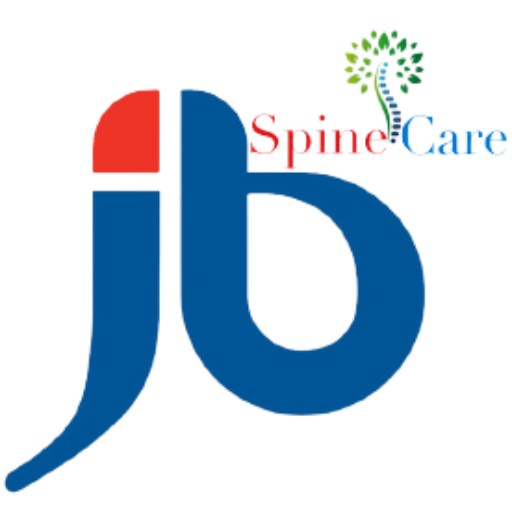Minimally Invasive Spine Surgery

What Is Minimally Invasive Spine Surgery?
Dr Jayesh Bhanushali is an expert and extraordinary surgeon for Minimally Invasive Spine Surgery in Thane. Minimally Invasive Spine Surgery (MISS) is an option in contrast to customary open surgeries performed to treat different spinal problems, like degenerative plate illness, herniated circle, scoliosis, and spinal stenosis. Spine medical procedure performed insignificantly obtrusively offers numerous possible advantages, like little entry points, less slicing through delicate tissues (eg, tendons, muscles), short term choices, less post-employable agony, and quicker recuperation.
Normal Spine Surgery Goals
Whether spine medical procedure is performed open or negligibly obtrusively, two fundamental objectives continue as before.
- Decompression: Spinal decompression includes eliminating tissue that is packing nerve structures, for example, a spinal nerve root as well as the spinal rope. Bone prods or potentially pieces from a herniated circle are instances of tissues that can cause brain pressure.
- Adjustment: Abnormal development of at least one levels or portions of the spine can cause back or neck torment. Surgeries that settle and stop development of the spine include spinal instrumentation and combination.
Minimally Invasive Spine Surgery Techniques
Minimally Invasive Spine Surgery might include percutaneous (through the skin) or scaled down open (little cut) methods. Rather than slicing through delicate tissues, segmental cylindrical withdrawal makes an expandable passage that passes between muscles to get to the spinal section. An endoscope, a little camcorder, projects representation of the careful region on a screen during the strategy to the spine specialist in Thane. Dr Jayesh Bhanushali the ortho specialist, spine surgeon performes surgery through the rounded withdrawal framework using uniquely planned instruments.
Sorts of surgeries performed negligibly obtrusively incorporate discectomy or microdiscectomy, foraminotomy or microforaminotomy, microlaminectomy and microlaminotomy.
Careful imaging frameworks and picture direction innovations, like fluoroscopy (continuous x-beam), are used during a medical procedure to pinpoint key parts of the patient’s spinal life systems. Besides, careful imaging projects 2D and 3D perspectives and guides arrangement of instrumentation, for example, pedicle screws.
4 Spinal Disorders Treated Using MISS
Degenerative circle illness
Degenerative plate sickness (DDD) normally grows continuously in more established grown-ups influencing the spine’s intervertebral circles. Typical cell age-related changes in the body can make plates solidify, lose adaptability, strength, level and shape, and capacity to assimilate and appropriate powers related with development. These primary changes might increment risk for plate herniation.
Herniated plates
A herniated plate, at times called a slipped circle or burst plate, happens when the gel-like inward center of an intervertebral plate gets through the defensive external layer of the circle. Other than the harmed plate, the inside gel can disturb and kindle close by spinal nerves and cause back torment.
Scoliosis
Scoliosis is an unusual sideward bend of the spine that might cause moderate spinal distortion. A scoliotic bend might look like an “S” or “C.” Most instances of scoliosis have no known reason — and keeping in mind that the condition is for the most part connected with youngsters, grown-ups can foster scoliosis, as well.
Spinal stenosis
Spinal stenosis happens when spinal nerve roots or potentially the spinal string become compacted. The nerve roots branch off the spinal string and leave the spinal waterway through ways called neuroforamen. Nerve or potentially spinal string pressure can cause side effects like agony, shortcoming, shivering sensations, and deadness. Once in a while, torment and side effects
Dangers of Minimally Invasive Spine Surgery
Any sort of spine medical procedure offers possible advantages and dangers — entanglements can happen. Recorded underneath are a few potential complexities that might happen during as well as after spine medical procedure — both open and insignificantly obtrusive spine surgeries.
- Blooding
- Blood clumps
- Nerve harm
- Return of side effects
- Bombed combination (known as pseudarthrosis or non-association)
- Disease
What factors do you need to consider?
It’s important to do some research and choose a spine treatment facility that offers a team approach if you want to get the best results for your back or spine problem. Surgeons that use minimally invasive procedures must be extremely knowledgeable, skillful, and skilled. But the team shouldn’t just consist of surgeons.
we provide one of the best Minimally Invasive Spine Surgery in Thane.
Never be afraid to ask plenty of questions regarding a step-by-step plan for your spinal health, and if surgery is required, don’t be afraid to enquire about the team’s track record in terms of how many surgeries they’ve carried out and how they worked out.
The Spinal Fusion has been used to treat a number of lumbar spine diseases, including tumours, spinal instability, deformity, and stenosis, according to our experts who offer excellent treatment for Minimally Invasive Spine Surgery in Thane. But in order to expose the anatomic landmarks for screw insertion, accomplish a precise screw trajectory, and produce a suitable fusion bed, typical open anterior or posterior surgery requires significant soft tissue dissection.
Significant complications result from the tissue harm that takes place in addition to greater postoperative pain and a prolonged recovery time. A very morbid incision is needed for anterior surgery, which also runs the risk of vascular issues, colonic obstruction after the procedure, and sympathetic chain injury.
